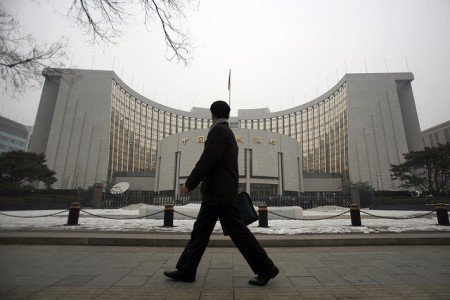China’s central bank on Wednesday announced that it will try to issue digital currencies ‘as soon as possible’ to cut the costs of circulating traditional paper money and boost policymakers’ control of money supply.
People’s Bank of China (PBOC) is planning to present its own digital currencies. There is a special team created in 2014 that has been studying cryptocurrencies and is preparing the launch now.
“The team … should set up a clearer strategic target for launching digital currencies, overcome the key technological barriers … and aim for an early launch of the central bank’s digital currencies,” the PBOC said.
The team conducts advanced research work in digital currency with relevant international agencies and establishes a communication link between the domestic and foreign financial institutions to participate in discussions to bring attention to research in digital currency.
PBOC considers operating with digital currencies profitable as it allows cutting the costs of circulating traditional paper money and boosting policymakers’ control of money supply. Moreover it can increase the transparency of economic activities fighting money laundering and tax evasions and thus leading to better economic and social development.
PBOC arranged a meeting to discuss the very possibility of creating its own digital currency. The official statement of the bank says that the meeting had a positive, practical, and far-reaching historical significance. It was attended by the governor of PBOC, Zhou Xiaochuan, deputy governor, Fan Yifei, and currency experts from Deloitte and Citibank among other currency experts.
PBOC is the central bank in China controlling monetary policy and regulating financial institutions in mainland China. It loses only to the Federal Reserve System of the USA in terms of overall central bank assets and has more financial assets than any single public institution
Reuters informs that PBOC would inject more than 600 billion yuan ($91.22 billion) via the three policy tools of the standing lending facility (SLF), medium-term lending facility (MLF) and pledged supplementary lending (PSL). It will help ease a liquidity squeeze expected before the Lunar New Year in early February.
Analysts say the PBOC’s move could reduce the need for it to cut banks’ reserve requirement ratios in the near future. Nevertheless the central bank remains responsible to ease policy to support a slowing economy.
PBOC will also provide short-term cash to financial institutions through reverse bond repurchase agreements in its open market operations. It has promised to keep liquidity in the banking system “reasonable and adequate” and keep market interest rates stable ahead of the Lunar New Year. “The international financial market turmoil is intensifying, and liquidity volatility in the banking system is increasing,” it said.
The central bank has already taken measures to support economics. It has cut interest rates six times since November 2014 and reduced the amount of cash that banks must hold as reserves. Unfortunately these actions didn’t have much impact. PBOC is planning to make more changes in the coming months.
next